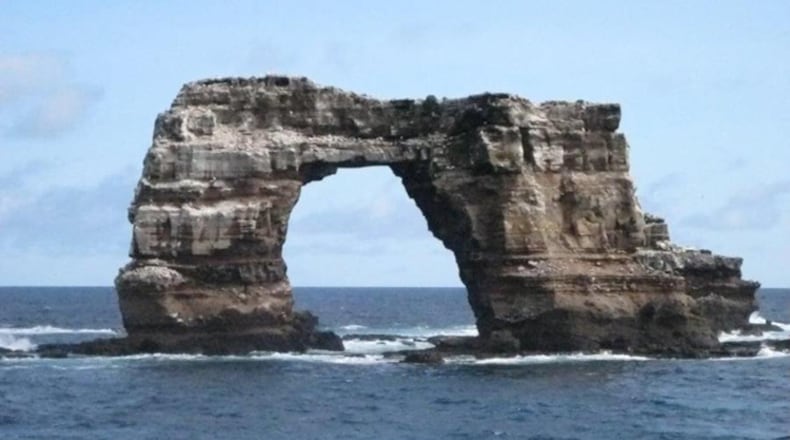Darwin’s Arch, the picturesque natural rock formation in the Galápagos Islands off the coast of South America, has collapsed into the Pacific Ocean.
The archway is a major tourist destination where divers around the world come for underwater encounters with sea turtles, whale sharks, manta rays and dolphins.
Natural erosion was responsible for the collapse, according to environmental officials in Ecuador. It marks the end of an era for a natural wonder in the region, now gone forever.
A diving boat in the area reportedly witnessed the collapse Monday morning as the natural bridge between two giant rock pillars crumbled to the water below.
There were no indications that anyone was injured as the rocks came crashing down.
The Arch was positioned on the northernmost of four islands in the remote archipelago located 600 miles off Ecuador.
About 30,000 people live there.
The rocky formation was named after the British scientist Charles Darwin, who visited the islands in 1835 and developed his theory of evolution by examining Galápagos finches, according to The Guardian.
“This event is a consequence of natural erosion. Darwin’s Arch is made of natural stone that at one time would have been part of Darwin Island, which is not open to visits by land,” the country’s environmental ministry reported on social media. “This site is considered one of the best places on the planet to dive and observe schools of sharks and other species.”
Monuments and islands around the world are susceptible to erosion. But UNESCO, the U.N. Educational, Scientific and Cultural Organization, has warned that the Galápagos Islands are one of the world’s most vulnerable places to the effects of climate change, according to The New York Times.
The islands are situated at the convergence of three ocean currents that make them vulnerable to El Niño weather patterns, which causes a rapid heating of Pacific Ocean waters.
Easter Island, also in the Pacific, is threatened by rising waters, with waves already hitting the famed moai statues.
About the Author
The Latest
Featured



